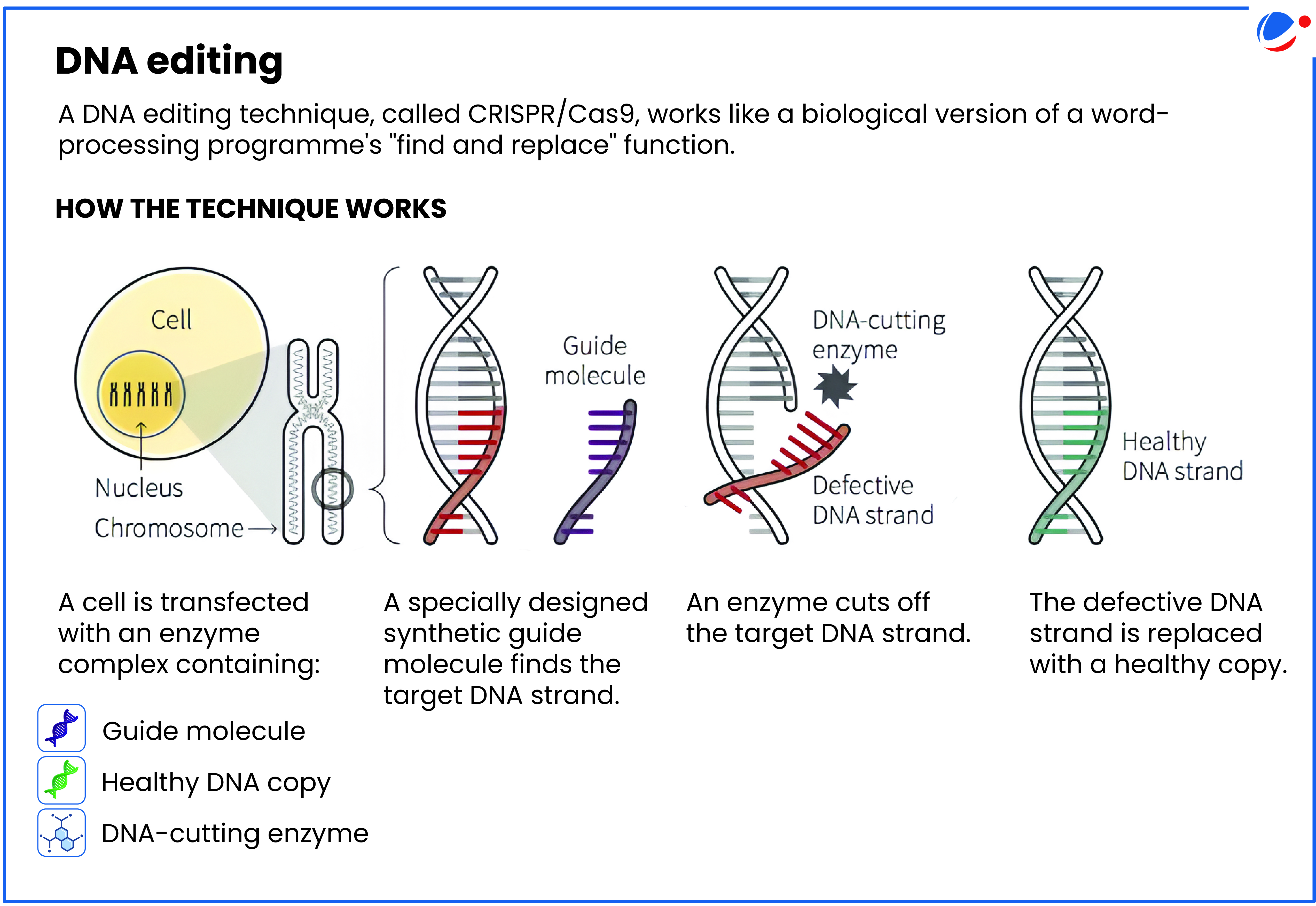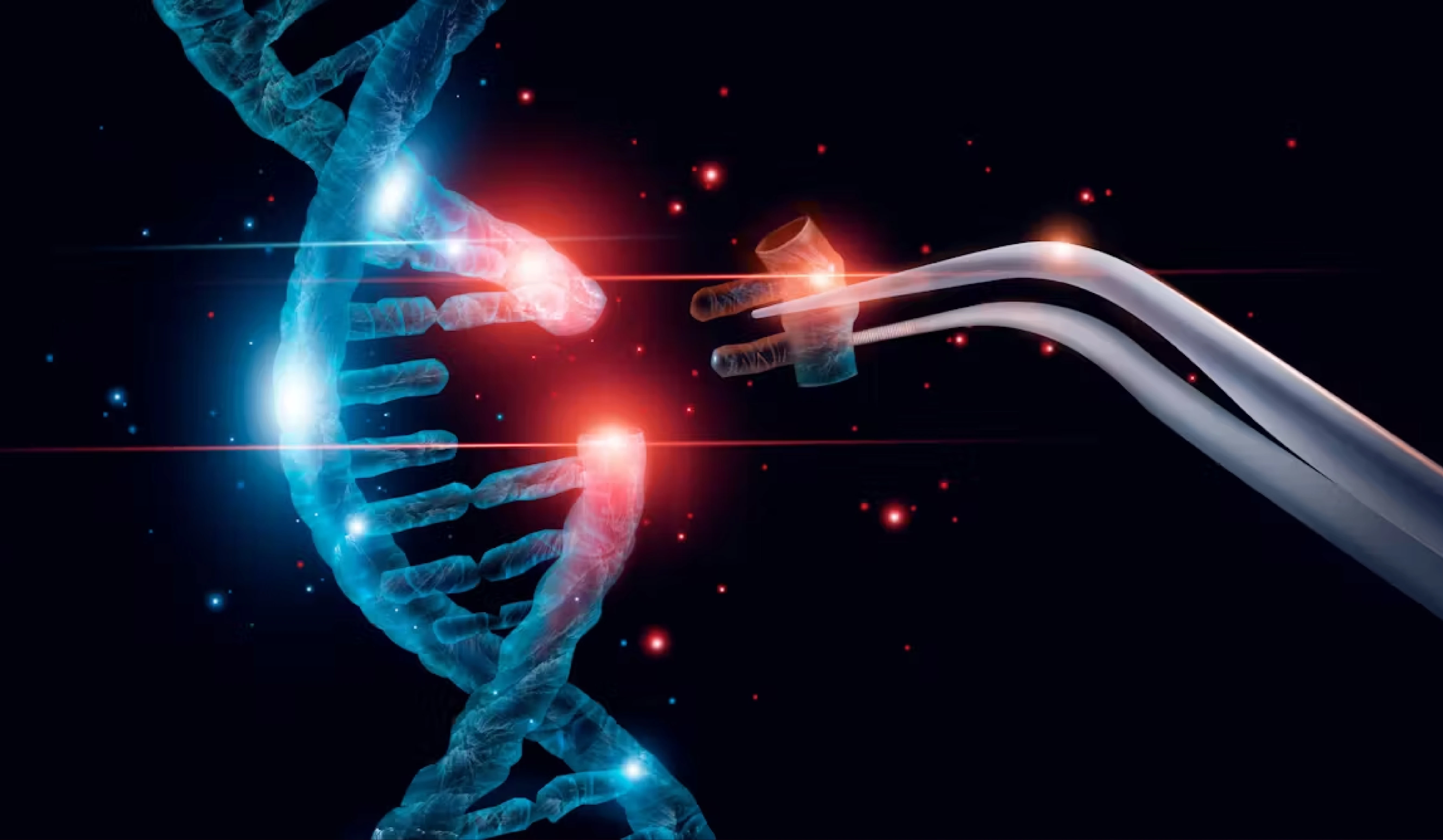Scientists in the US have, for the first time, successfully used a personalized CRISPR-based gene-editing treatment to cure a baby suffering from a rare genetic disorder called CPS1 deficiency.
- CPS1 deficiency is a rare condition where the liver fails to break down byproducts from protein metabolism, leading to toxic ammonia buildup in the body.
What is Gene Editing Therapy?
- It involves modifying an organism’s DNA by correcting genetic defects, altering gene expression, or introducing new genetic material.
- It offers hope for treating conditions like sickle cell anemia, cystic fibrosis, and certain cancers, which are otherwise hard to treat.
- DNA Modification in Two Ways:
- Somatic Gene Editing: Involves editing the DNA of non-reproductive (somatic) cells, like skin, liver, or blood cells, affecting specific tissues/organs in a living individual.
- Changes are limited to the treated individual & are not passed on to offspring.
- Germline Gene Editing: Involves editing the DNA of reproductive cells (sperm, eggs) or early-stage embryos, affecting all cells in the resulting individual.
- Changes are heritable (passed to future generations) as they alter the genetic makeup of the entire organism, including somatic & reproductive cells.
- Somatic Gene Editing: Involves editing the DNA of non-reproductive (somatic) cells, like skin, liver, or blood cells, affecting specific tissues/organs in a living individual.
- Mechanism: (Refer to the diagram)
- Tools Used: CRISPR-Cas9 (uses guide RNA & Cas9 nuclease to cut DNA at targeted sites); Zinc Finger Nucleases (ZFNs); TALENs, etc.





